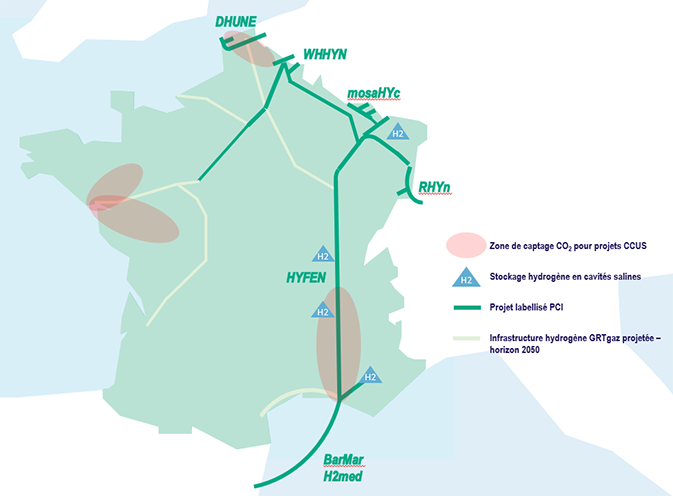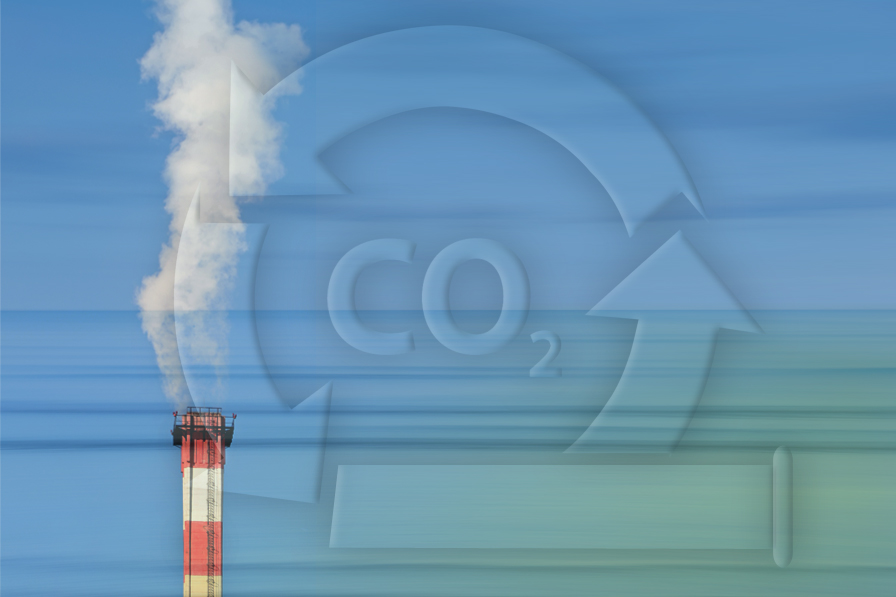GRTgaz's hydrogen and CO₂ infrastructure projects

GRTgaz, France’s primary gas transmission system operator, which is committed to the energy transition, welcomes the approval granted by the European Parliament and the European Council of the list of “Projects in the Common Interest” that was published by the European Commission on 28 November 2023. The five hydrogen transmission projects spearheaded by GRTgaz (HY-FEN, MosaHYc, RHYn, DHUNE and WHHYN), as well as the BarMar project that is part of H2Med, have been officially given “PCI” status. Furthermore, four other projects to do with CO2 transmission in which GRTgaz is involved have also been awarded certification. Such projects being certified this way paves the way for potential funding from the CEF (Connecting Europe Facility) fund to finance their implementation.
Five hydrogen projects led by GRTgaz recognised by the Commission as “Projects in the Common Interest”
GRTgaz is developing a European hydrogen transport network, connecting up France, Belgium, Germany and Spain. On Thursday 28 March 2024, these strategic projects were officially awarded the “Projects in the Common Interest” label, in recognition of their role in helping the EU to achieve its climate targets. This PCI label will provide them with access to CEF funding (Connecting Europe Facility), which will help these projects to advance.
- The MosaHYc and RHYn projects foreshadow the Franco-German hydrogen transmission corridor. MosaHYc will be the first cross-border hydrogen network. By converting the old gas pipeline system between the Moselle and Saarland regions, GRTgaz and its partners are planning to bring it into service in 2027. The RHYn project in the Upper Rhine region will help decarbonise industry across Alsace, Baden-Württemberg and the Basel region.
- The Franco-Belgian corridor will incorporate the WHHYN (Wallonie Hainaut Hydrogen network) et DHUNE (Dunkirk Hydrogen Universal Network) projects, and will play a crucial role in connecting the North Sea, Dunkirk, Belgium and hydrogen basins across the Paris region and France's Greater Eastern region.
DHUNE will help decarbonise the Dunkirk industrial zone and is set to be extended towards Belgium. WHHYN has its roots in a highly industrialised cross-border area, and will be expanded towards the Paris region and the Franco-German hydrogen valleys. - HY-FEN is a North-South hydrogen connection project between Marseille and Obergailbach on the German border
It will connect up the hydrogen production potential located in the Iberian Peninsula up to the primary consumption and storage basins in France and Germany, integrating strategic storage sites along the length of its route. - Finally, BarMar is a Franco-Spanish project that will involve the creation of a subsea pipeline system between Barcelona and Marseille. This pipeline will be able to carry 2 million tonnes of hydrogen per year, and will connect the Iberian Peninsula to the central European network.
At the same time, GRTgaz is pursuing its development initiatives in the main industrial basins (notably the St Nazaire estuary and the Mediterranean region) to develop a French hydrogen transport network by 2050, fully integrated into a European market.
CO₂ transport projects in which GRTgaz is a partner have also been selected
GRTgaz is involved in decarbonisation projects which will involve the deployment of CO2 transport infrastructure. Indeed, CCUS (Carbon Capture, Utilisation and Storage) requires a high-performance transport network to carry extremely large quantities of CO2 from where it is emitted to where it is used or geologically stored.
Four projects in which GRTgaz is a partner have been officially recognised as “Projects in the Common Interest” in the Dunkirk-Seine Valley, Saint Nazaire and Fos-sur-Mer regions, where there are high levels of industrial emissions.
Map of GRTgaz's hydrogen and CO2 projects which have been PCI certified


